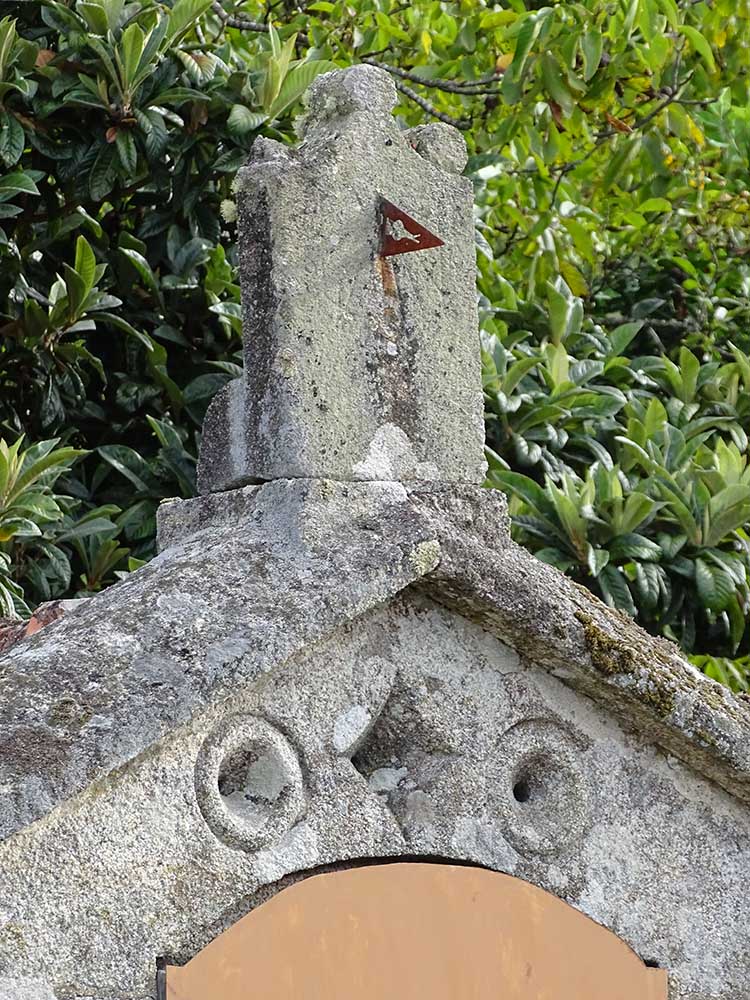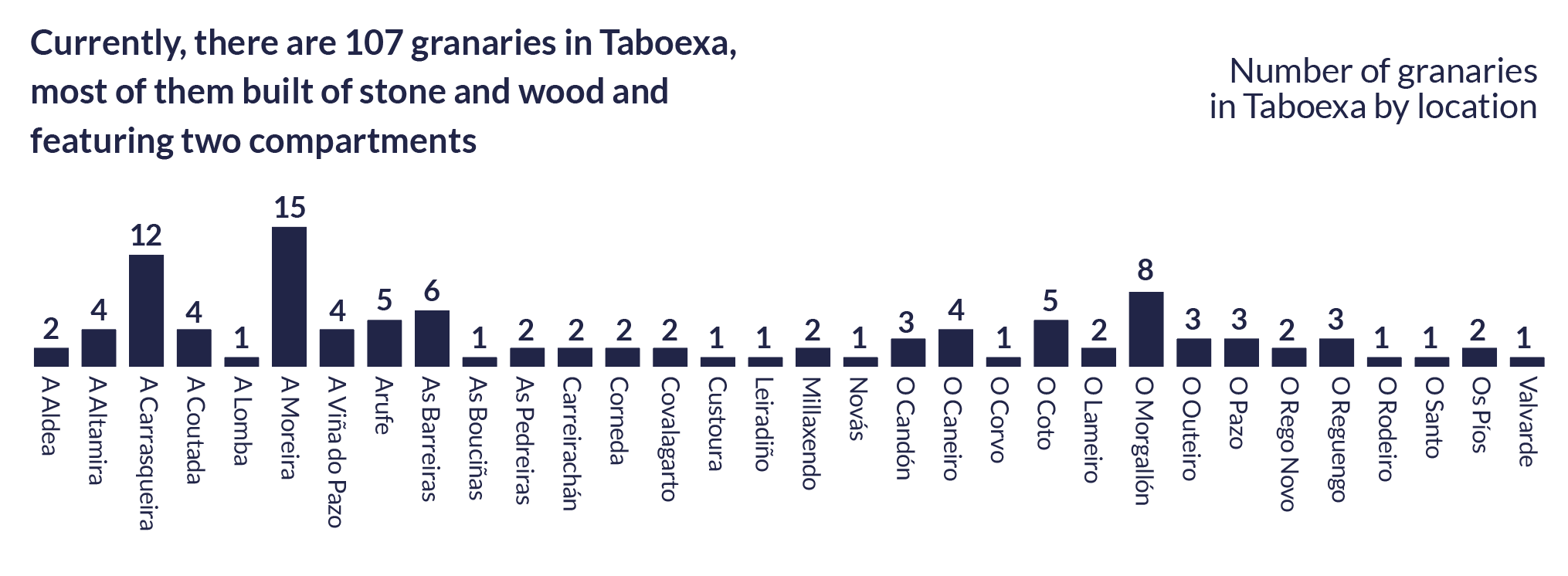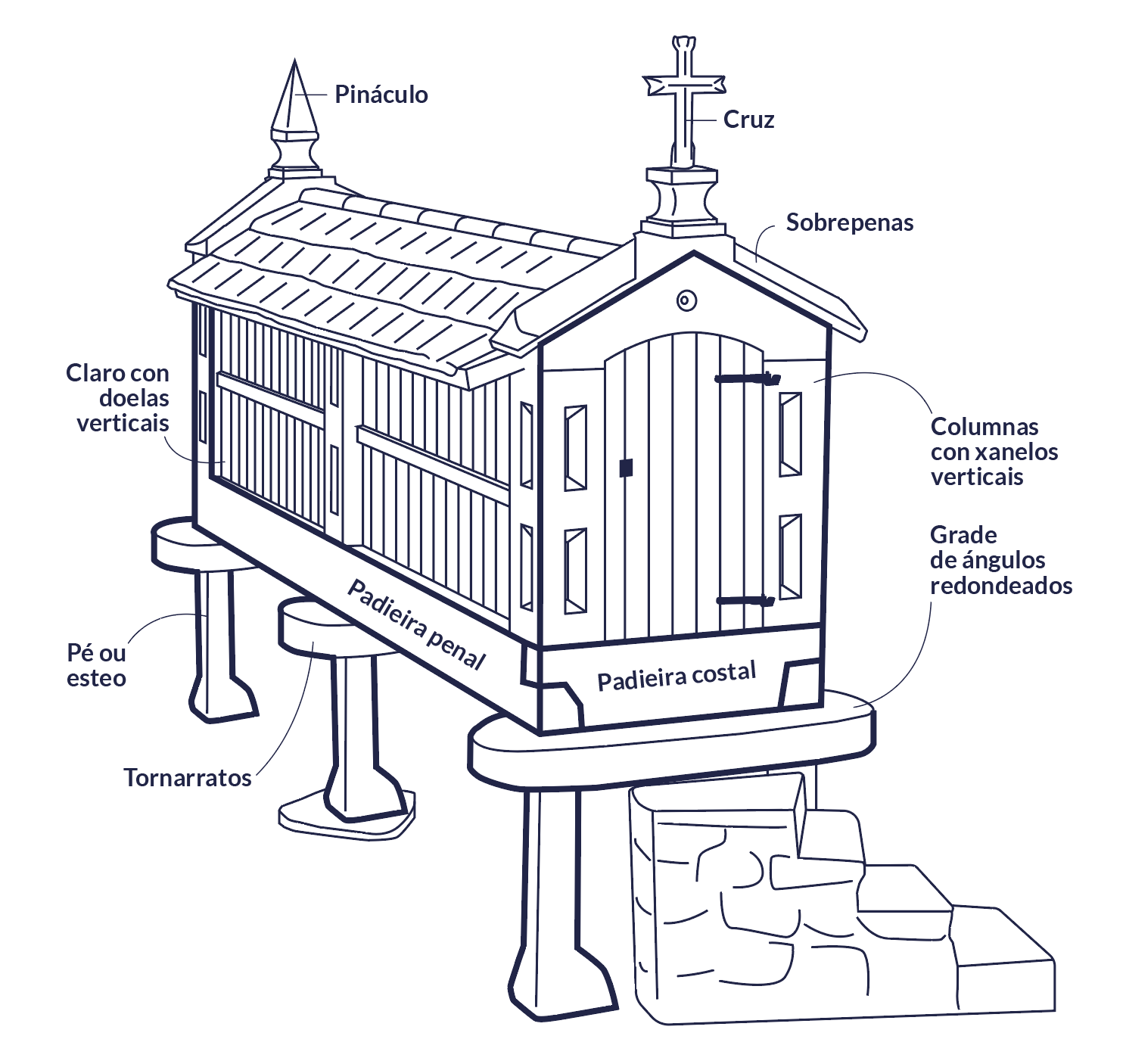
Detail of the sundial of a granary erected in Carrasqueira.
Our parish is rich in rural architectural heritage, and the hórreos occupy a prominent place in it.
Hórreos are especially abundant in the municipality of As Neves and in the parishes of O Condado, where the building tradition was maintained for centuries, mainly from the second half of the 18th century until the beginning of the 20th century.
In traditional houses, the usual dimensions of these adjective constructions are about 3 metres long by 1 m wide. The equidistance between the steeples and the vines is known as a clearing or pasavento, offering variable dimensions, although the usual separation is between 1.20 and 1.50 m.

Granary of A Casa dos Periquillos, in A Coutada
Two typologies
Wooden granaries
These hórreos are usually made entirely of oak or chestnut wood, a material that is highly valued for its durability, resistance to damp and flexibility.
The structure of the wooden hórreos includes a chamber or raised floor on a granite base that supports a series of feet and braces made of the same material that support the main body. The side elevations of the chamber are formed by voussoirs, a series of vertical slabs that allow ventilation of the interior. The roof, made of flat or curved tiles from the country, is always gabled to facilitate the drainage of rain.
This type of granary requires more costly and frequent maintenance than the mixed type, which is why their number is decreasing.

A rod granary in a painting by Carlos Sobrino Buhigas (Concello de Pontevedra)
One of the most characteristic aspects of the Taboexa granaries is their mixed typology, which combines stone elements in the base and structure of the chamber with wood, present in the doors, floor and side elevations. This mixed design, very common in our region, represents a practical and aesthetic solution that fuses the solidity of stone in the hórreo's skeleton with the lightness and flexibility of wood in the closing of the chamber.
This combination of materials explains why this type of granary is the most common today.





